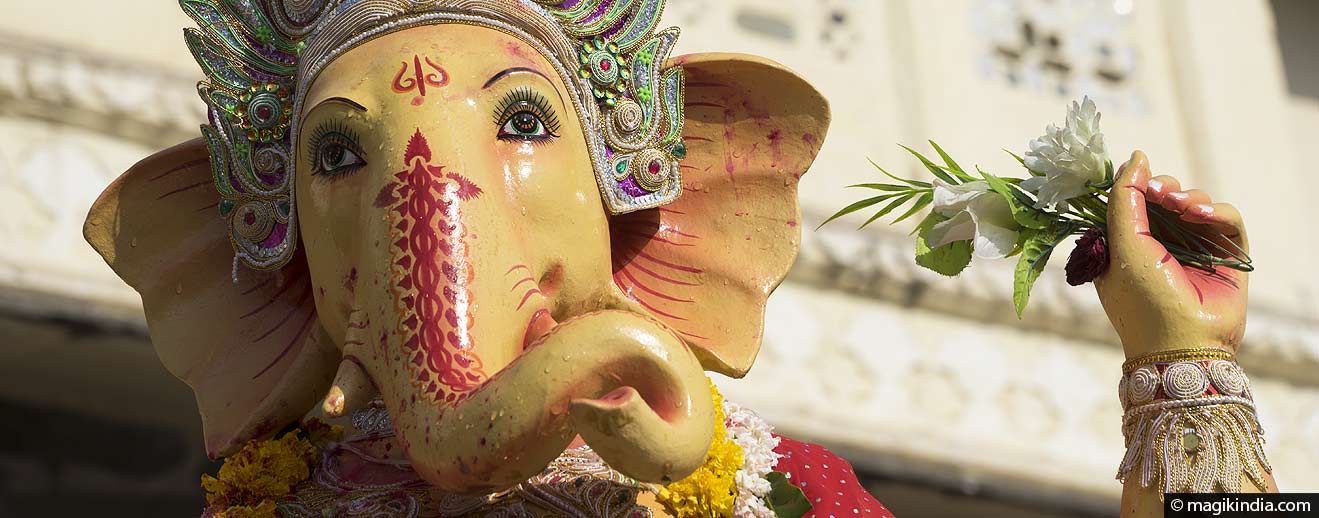
Ganesha Chaturthi, the birth of the elephant-headed god
Ganesha Chaturthi is one of the main Hindu festivals. It celebrates the birth of Ganesh, the famous elephant-headed god, son of Lord Shiva and the goddess Parvati. Ganesh is supposed to have been born on Shukla Chaturthi (the fourth day of the waxing moon) of the Hindu month of Bhadrapada (mid-August to mid-September). Ganesh symbolises wisdom, prosperity and good fortune. The festival is celebrated throughout India, but in some parts of the subcontinent, particularly in Mumbai (Maharashtra), it is the occasion for grand festivities.
Ganesha’s birth
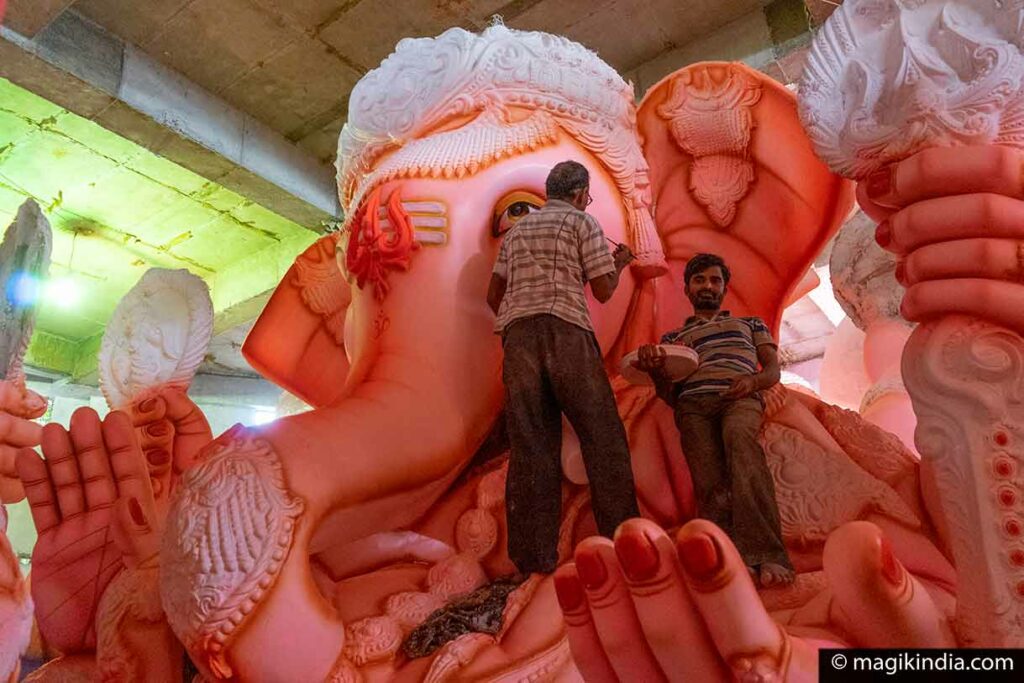
One legend says that one day when the goddess Parvati was getting ready for a bath at her home on Mount Kailash, as she did not want to be disturbed she asked Nandi, Shiva’s divine bull, to guard the door and let no one in. Nandi stood faithfully at his post but when his master Shiva came home he naturally let him in. Parvati was angry but then she thought, “No one is as faithful to me as Nandi is to Shiva”. So she took some of the sandalwood paste she used to wash with and fashioned Ganesha, breathing life into him and acknowledging him as her son.
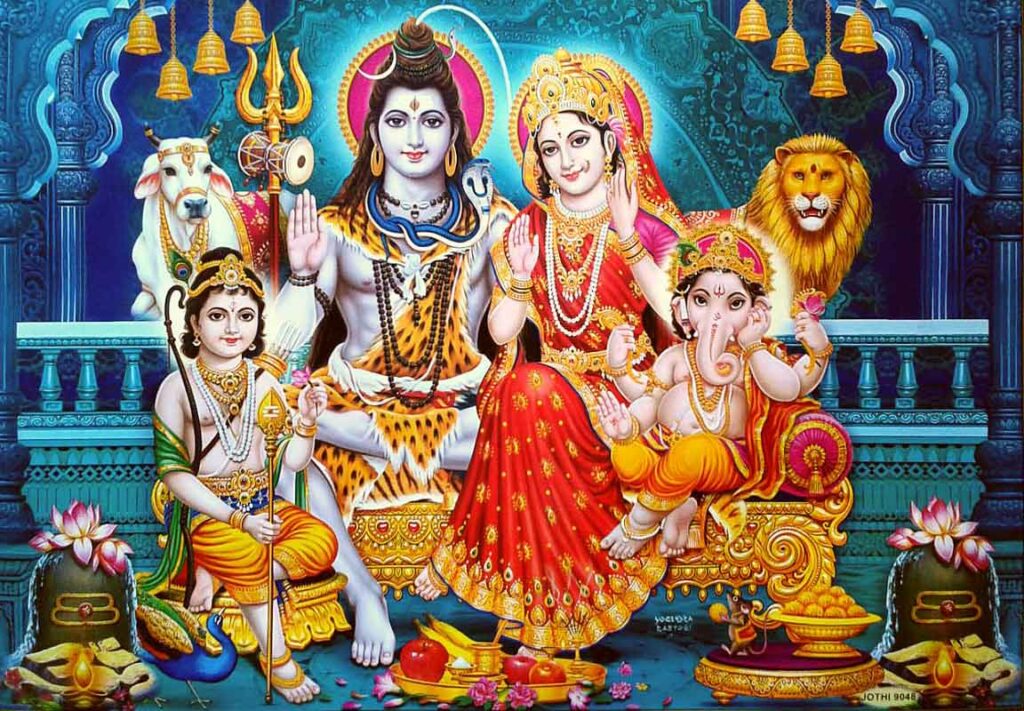
Next time she took a bath she posted Ganesh at the door. When Shiva came home he found this stranger at the door forbidding him entry. Furious, Shiva ordered his army to kill the boy but none could do so; Ganesha, being the son of a goddess, had superior powers.
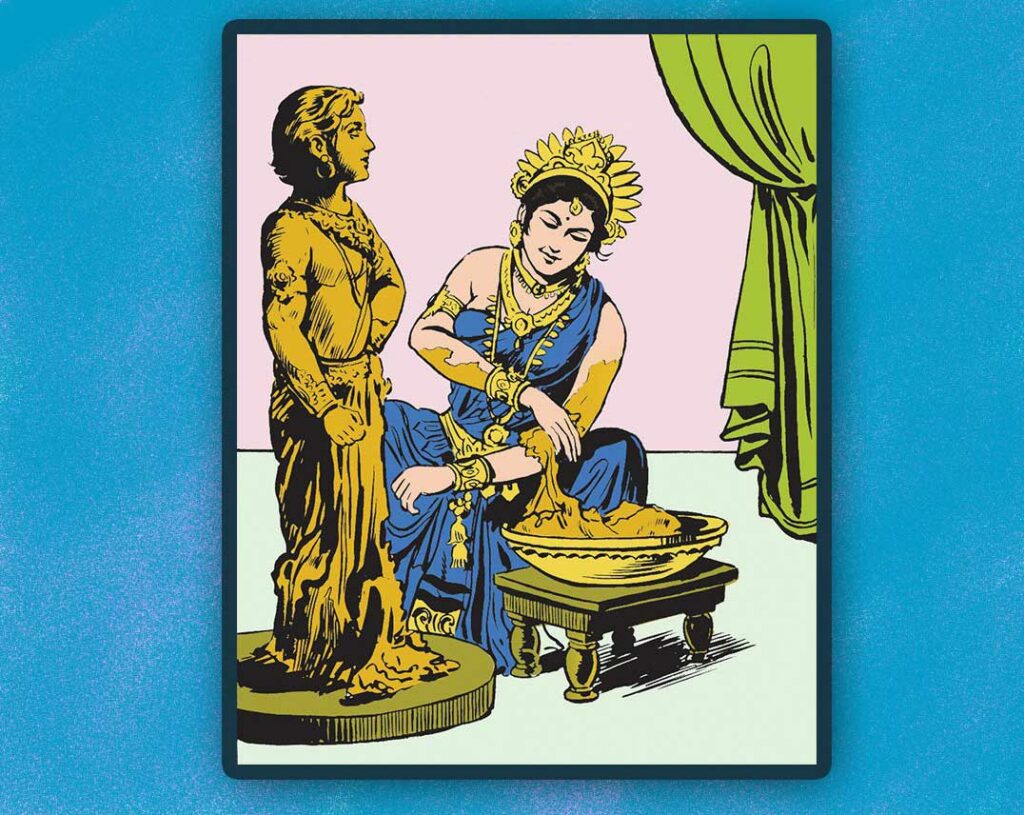
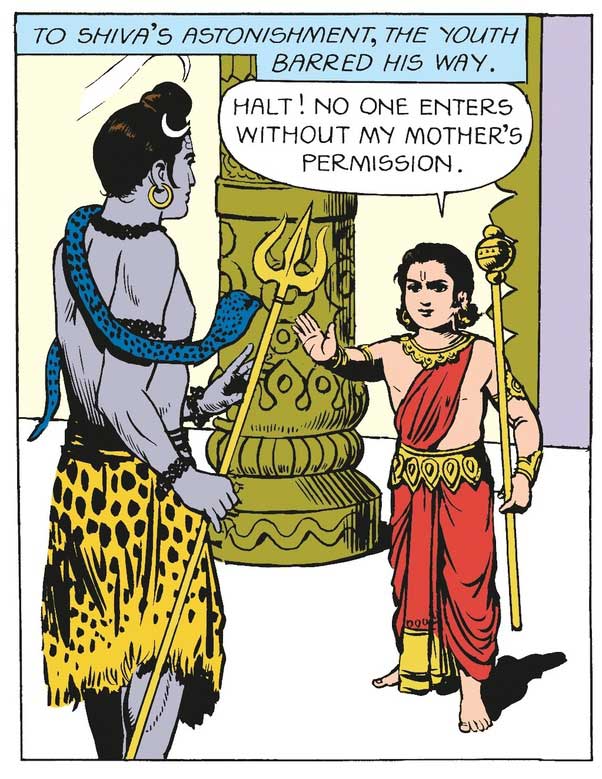
Shiva was surprised. Seeing that this was no ordinary boy, the usually peaceful Shiva decided to fight him and in his divine fury he cut off the young boy’s head, killing him instantly.
When Parvati learned of this she was so angry she decided to destroy the whole world. Brahma, the creator of the world, begged her to reconsider. She agreed on condition that Ganesha be brought back to life and that he should always be worshipped before the other gods.
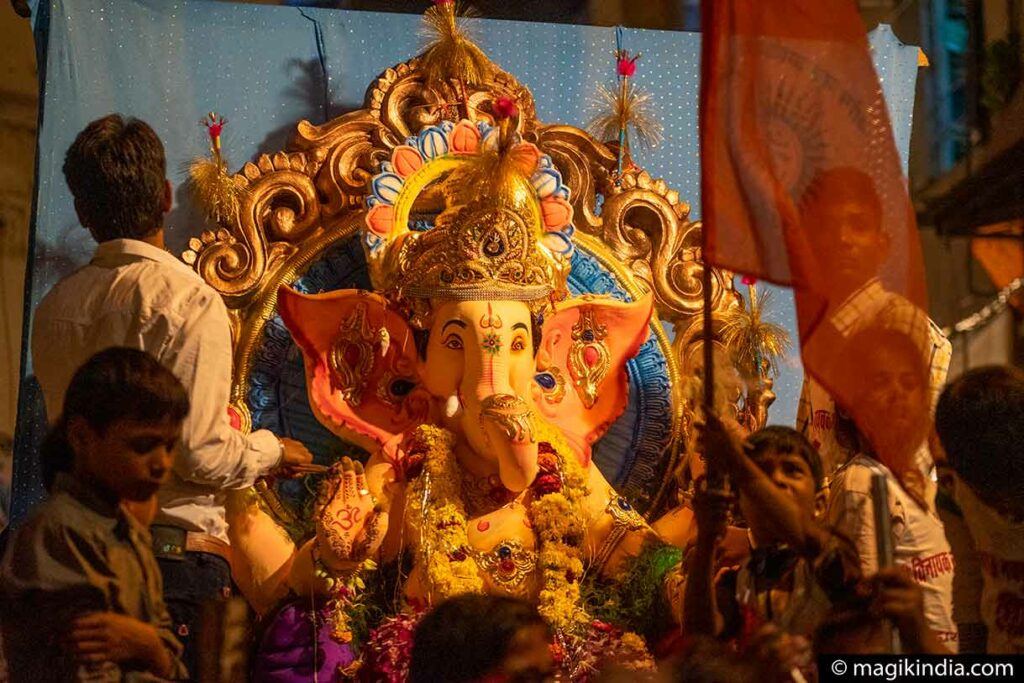
Shiva, realising his mistake, agreed to Parvati’s conditions. He sent Brahma out with the order to bring back the head of the first creature he met with its face turned to the north. Brahma was soon back – with the head of a great strong elephant, which Shiva placed on the boy’s body. He breathed new life into him and acknowledged him as his own son. He decreed that Ganesh would always be in the top rank of gods and be the leader of all Shiva’s troops, the Ganas – which is why Ganesh is sometimes called Ganapati.
Shiva also declared that anyone who invoked the name of Ganesh before starting a new undertaking would be successful in it.
Ever since, the elephant-headed god is invoked at the start of every religious ceremony and to bring good luck to any new project or venture.
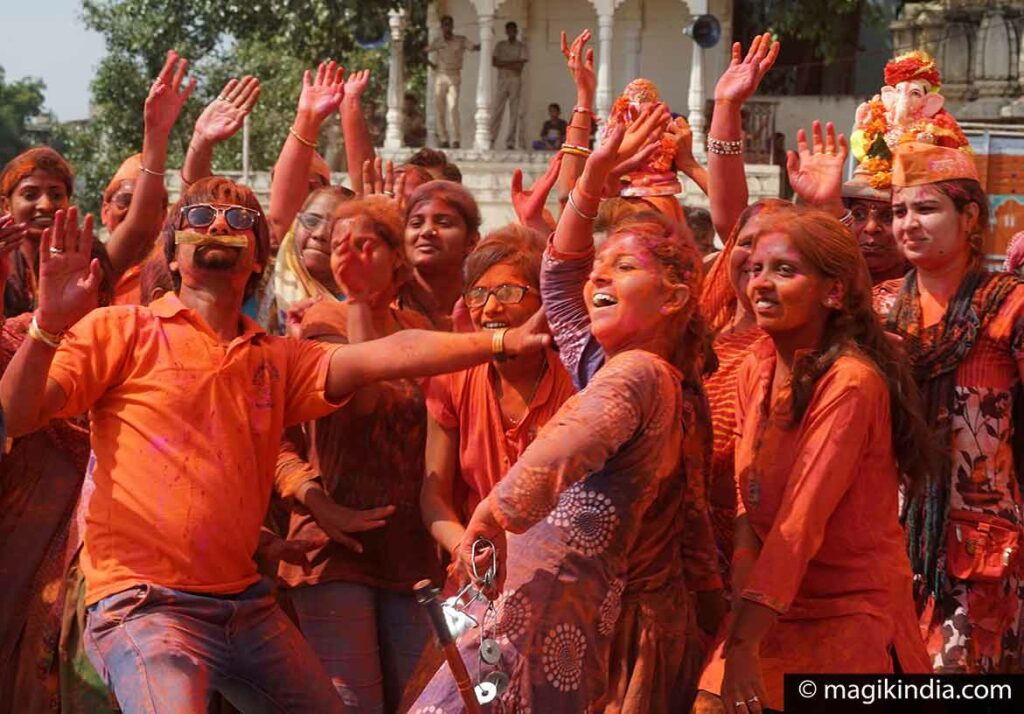
Festival Highlights
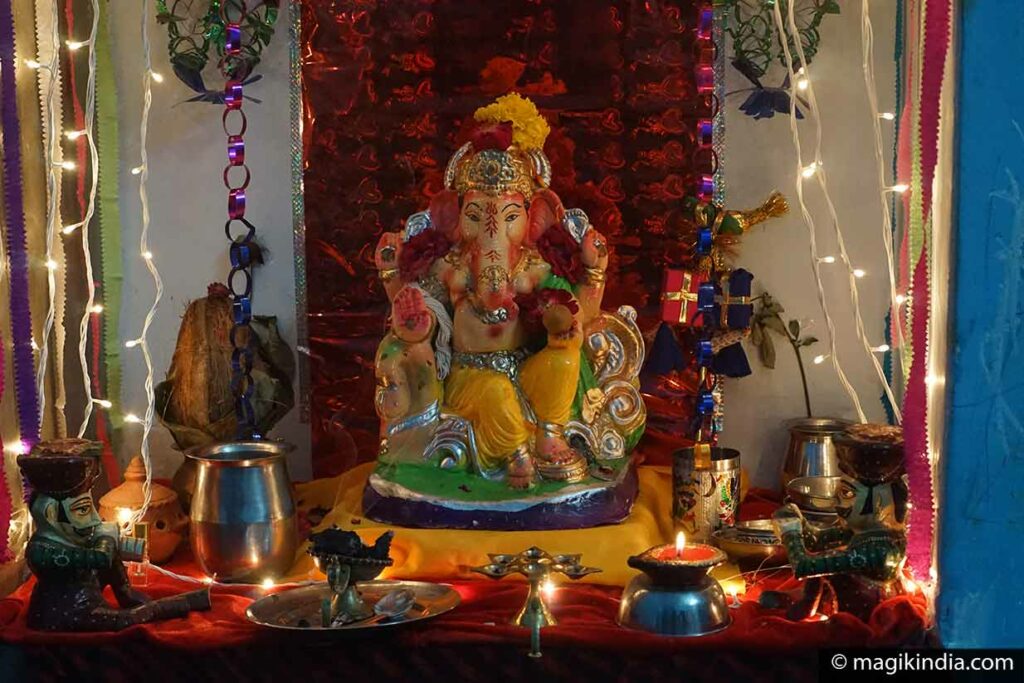
Ganesha Chaturthi is celebrated in different ways in different parts of India but traditionally people place Ganesh statues in their homes during the festival and in some towns temporary temples called pandals are erected.
Brahmin priests perform a ritual called pranapratishtha in the pandals at the start of the festival; this ceremony symbolically brings the idols to life.
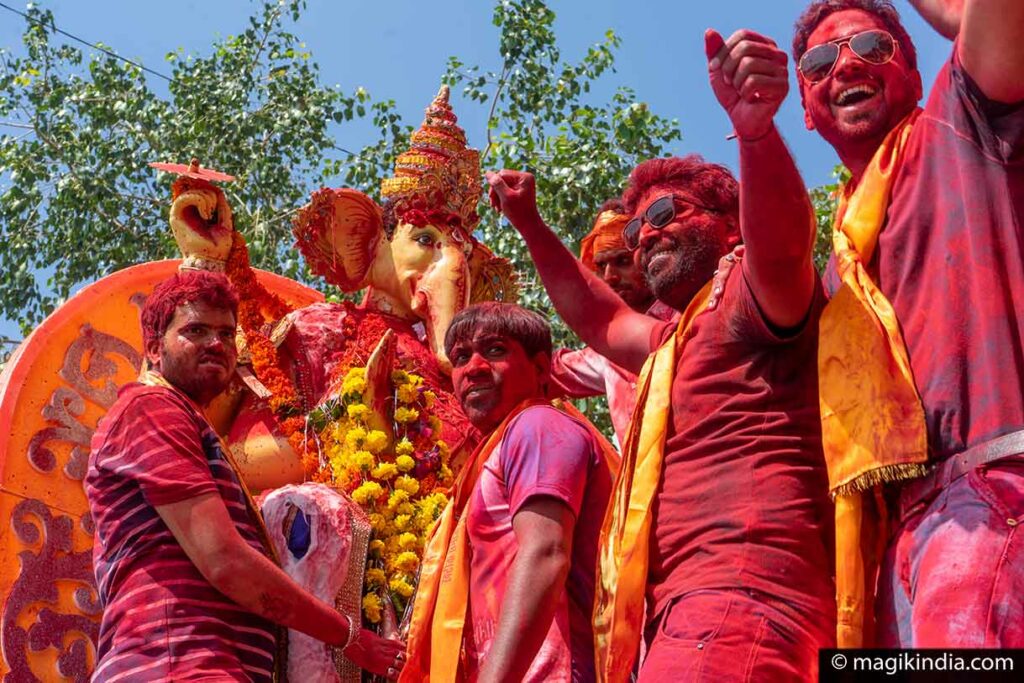
In people’s homes, morning and evening arati (flame offerings) are made to the Ganesha idol accompanied by mantras and other offerings such as clean water, milk, flowers, or one of Ganesha’s favourite sweets, modakas or laddoos.
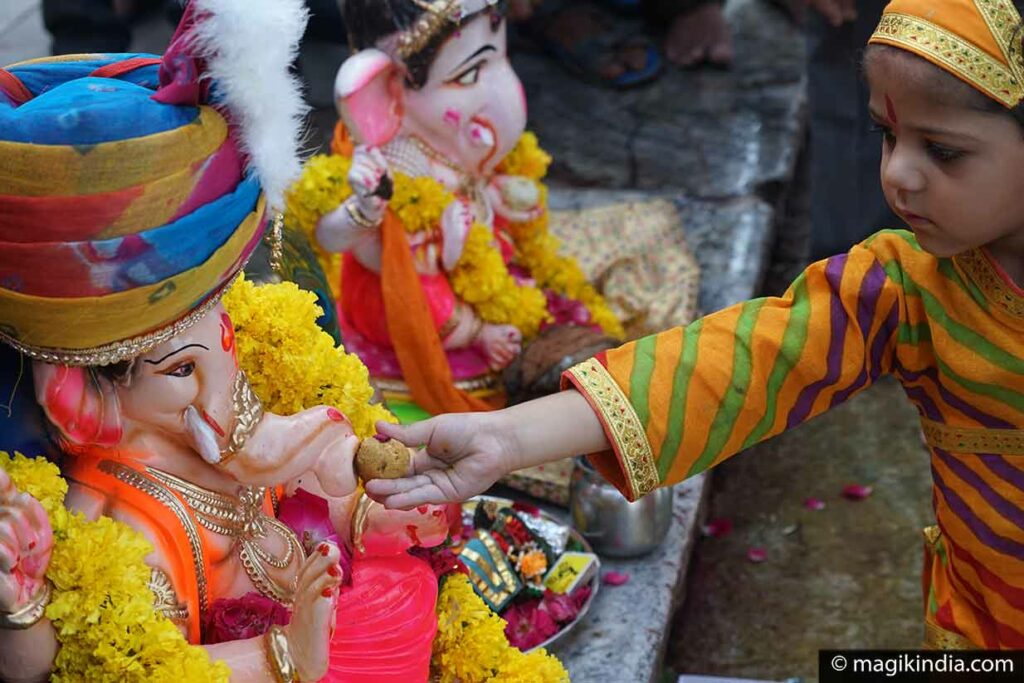
Traditionally Ganesha Chaturthi lasts 10 days. On the last day (Ananta Chaturdashi) which is also known as Ganesh Visarjan day, a farewell ceremony called uttar puja is held, after which the Ganesha idol is carried in procession to be immersed in a holy river or other body of water after a procession in the street.

[ Ganesha Chaturthi in Udaipur, Visarjan ]
Mumbai: Ganesh frenzy
The Ganesha Chaturthi devotional festival is celebrated by many, throughout India, but Mumbai, capital of Maharashtra state, is exceptional for the scale and exuberance of its celebrations.
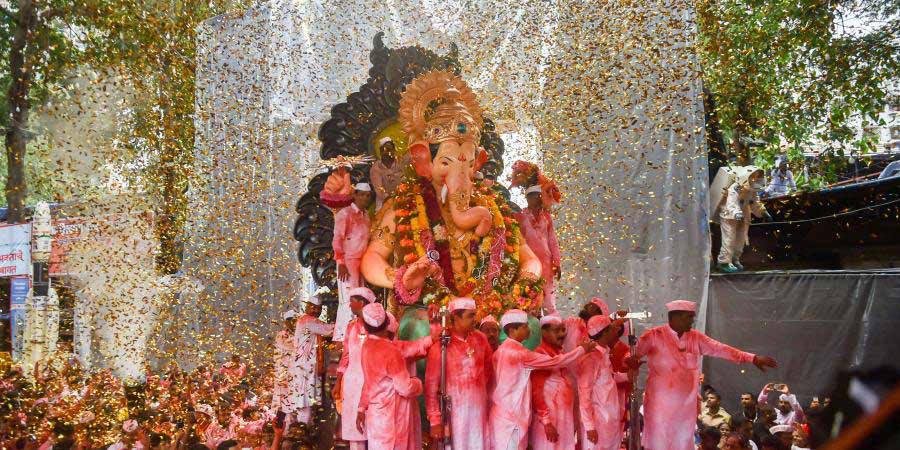
Majestic pandals (temporary temples) are build in every neighbourhood and there is fierce competition to build the most creative and impressive temple to hold the local Ganesh statue.
One of the most famous Ganesh idols is Lalbaugcha Raja in Mumbai’s Lalbaug district, which lords it over more than a million visitors a day during the festival.
The pandal was founded in 1934 and today the same family of sculptors, the Kambli family, still makes Ganesha statues of unequalled brilliance.
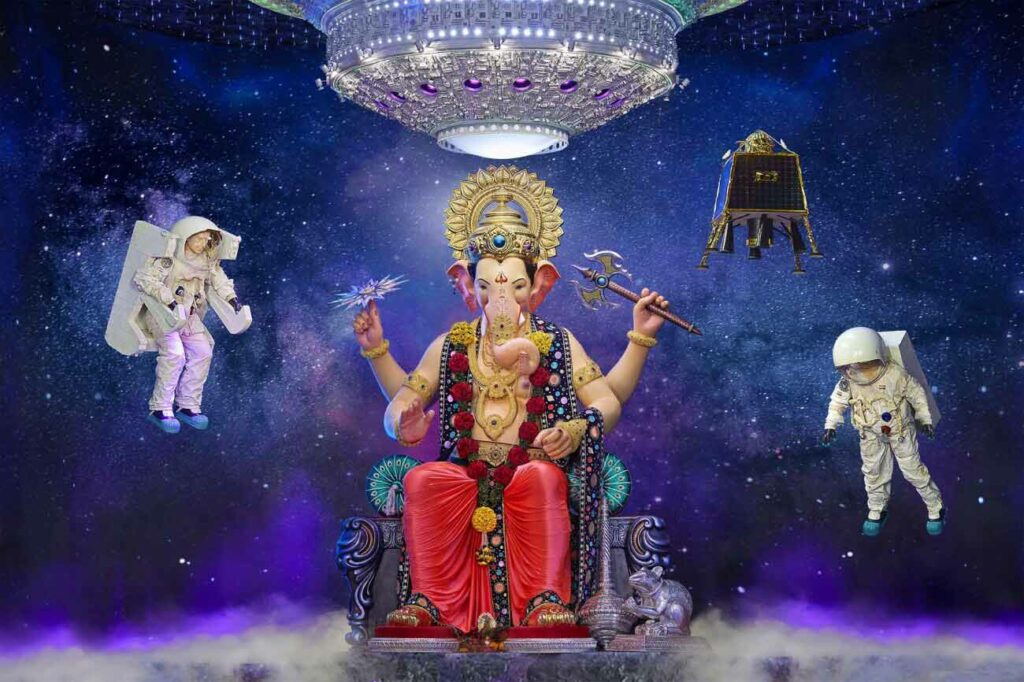
The famous Maratha ruler Chhatrapati Shivaji introduced the Ganesh Chaturthi celebrations to promote Indian culture and nationalism but it was only later, in 1893, that freedom fighter Lokmanya Tilak turned it into an organised public event.
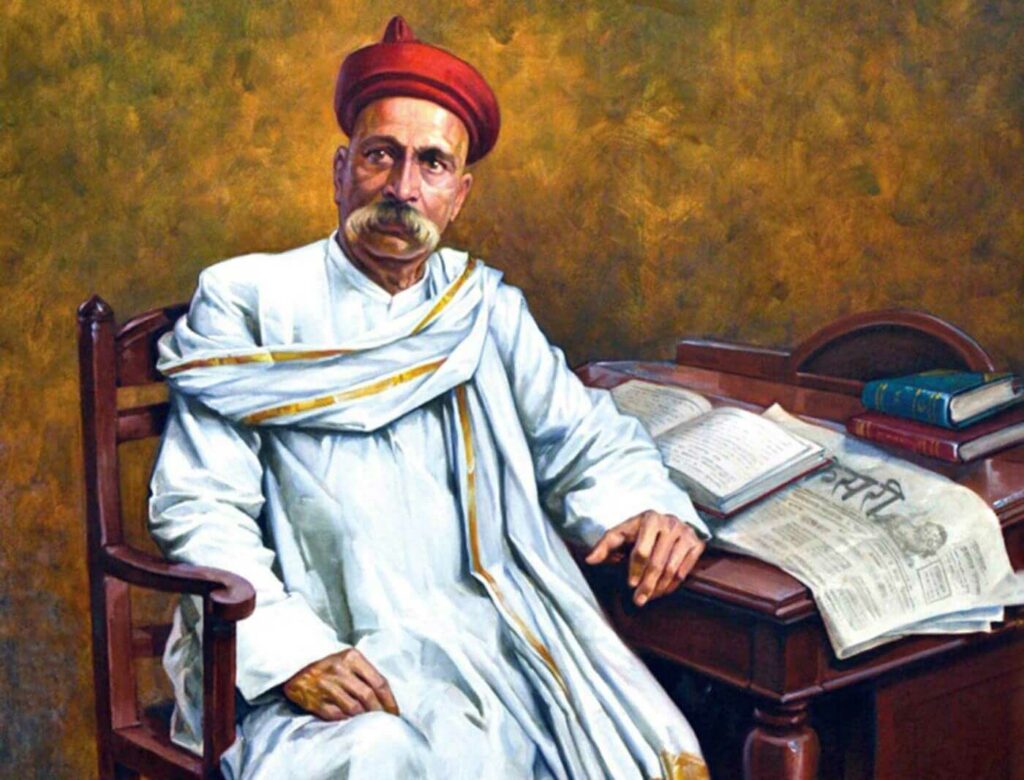
Lokmanya Tilak wanted to break down the barriers between castes and build national unity against British colonial domination. Ganesh, the god who removes obstacles to success, was the obvious symbol for such a cause.


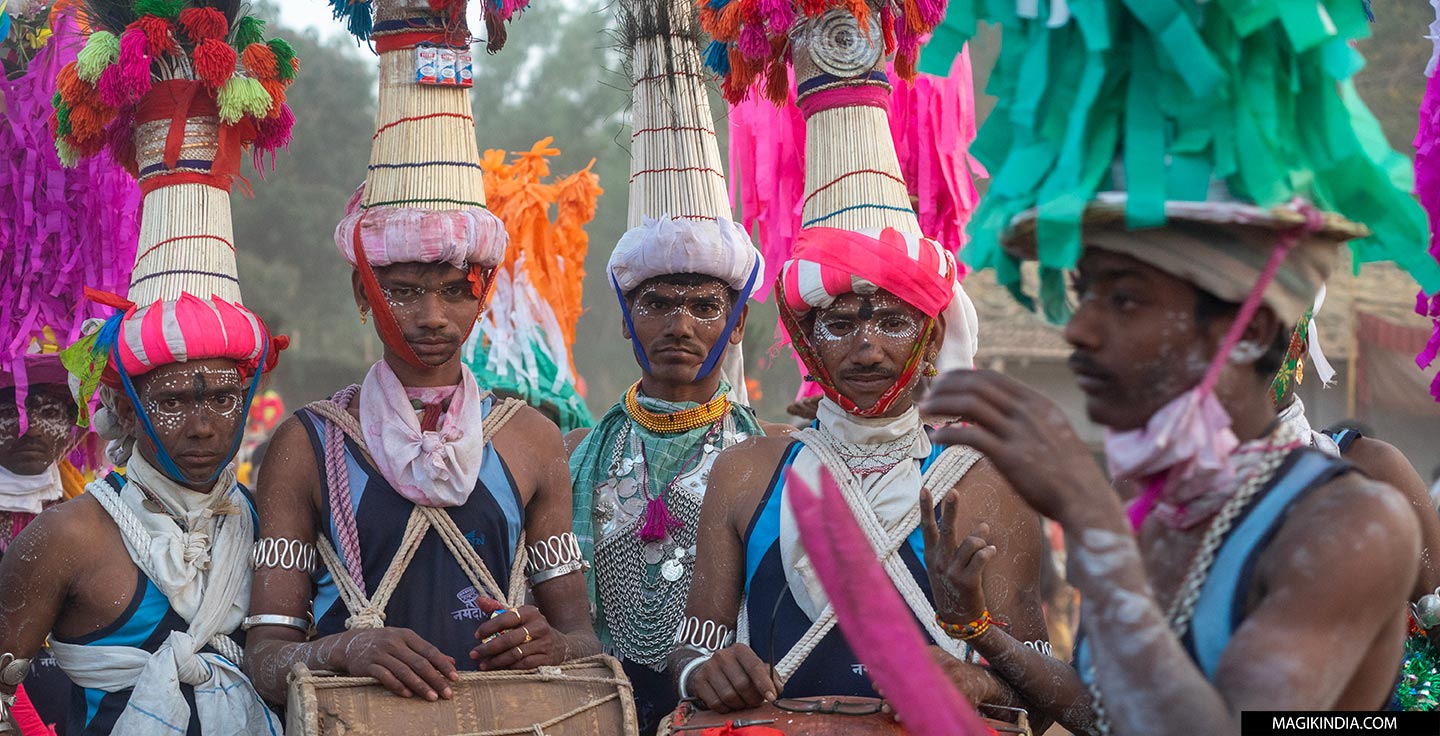
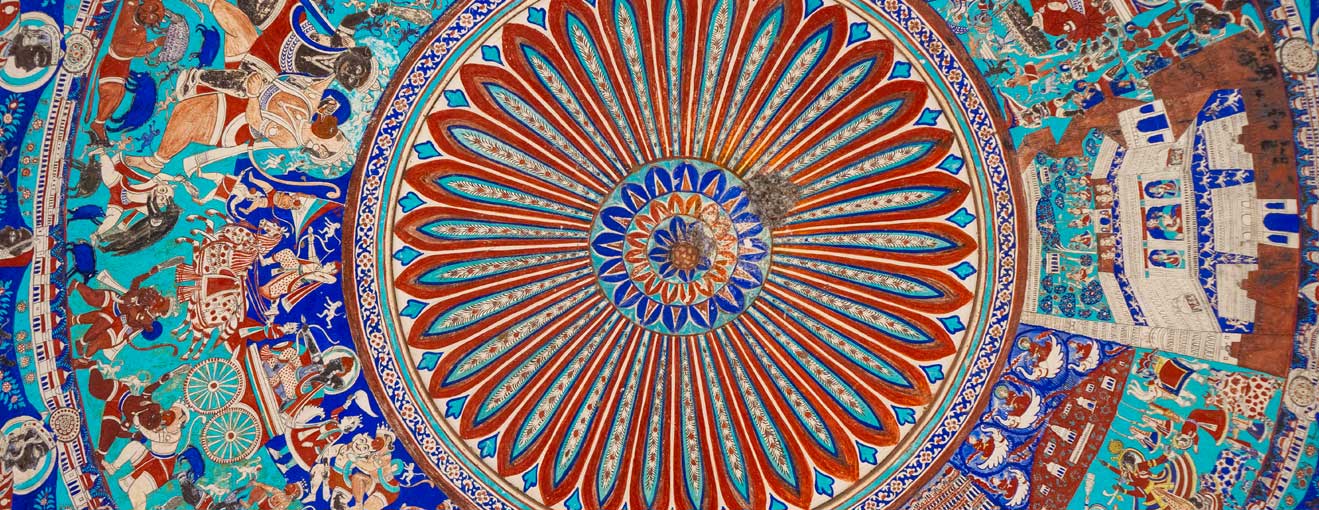
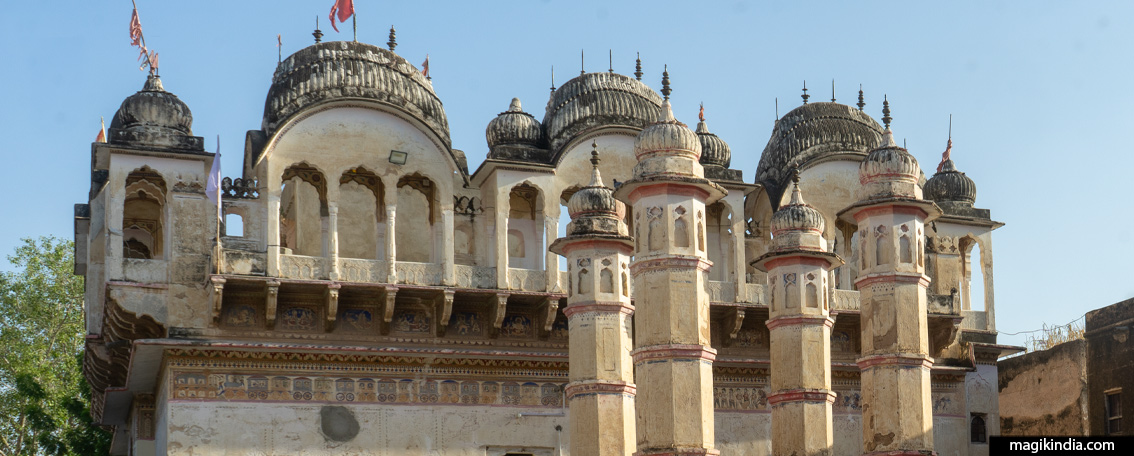
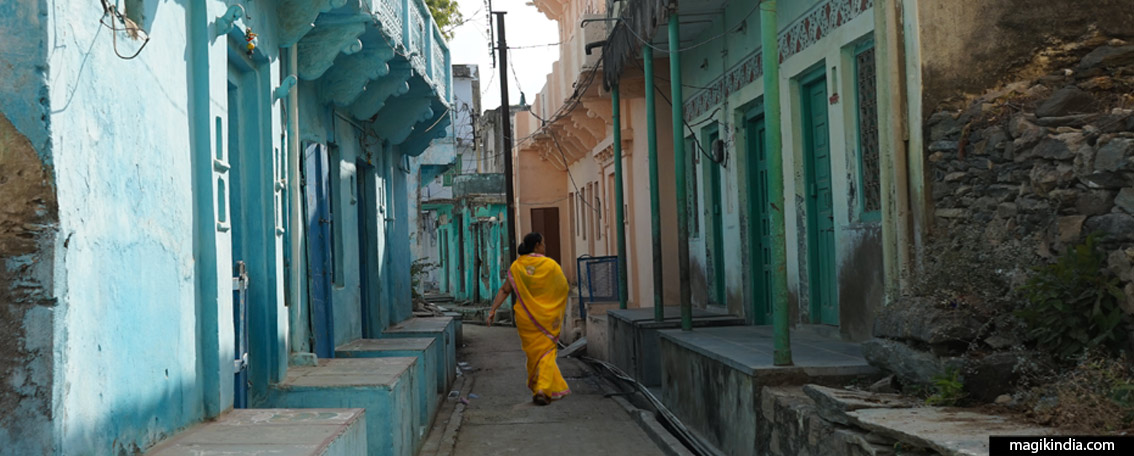
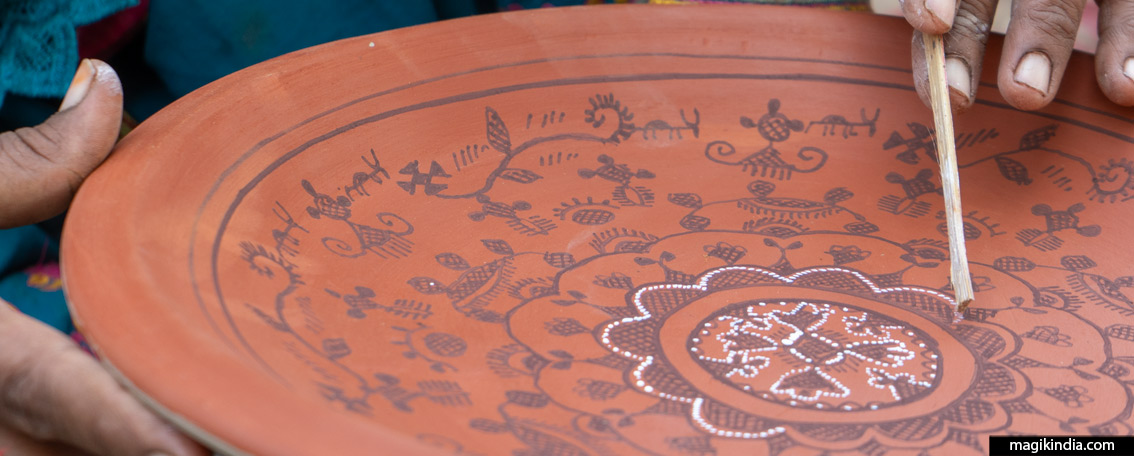
This was very useful information. I had to do a project of Ganesh Chaturthi and it helped me along the path. Thanks a lot again.
Thanks 🙂